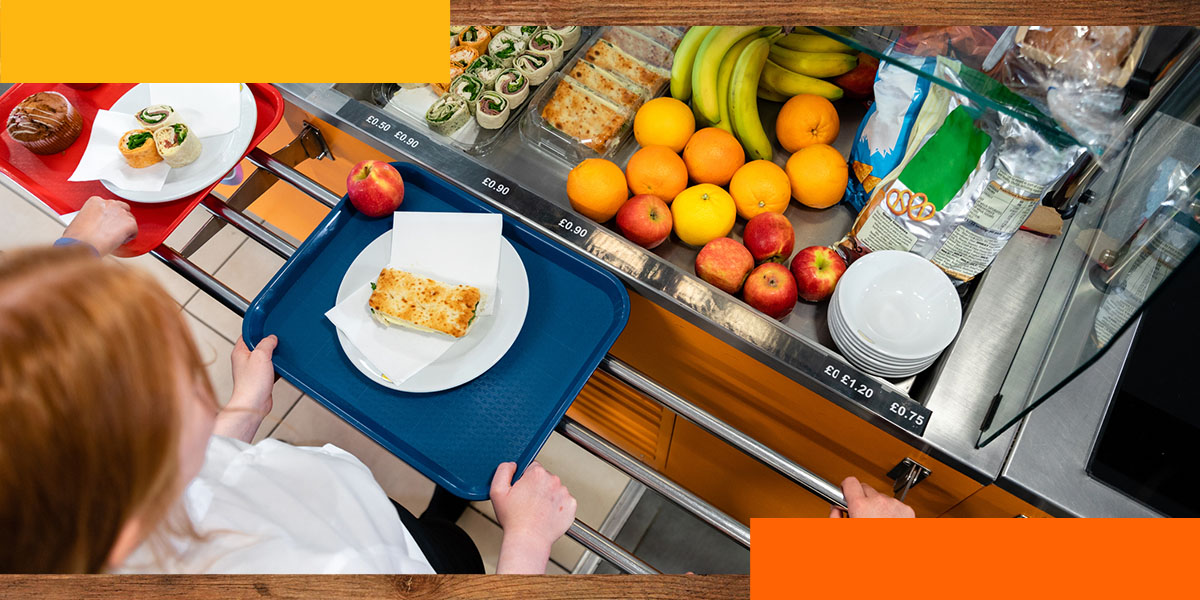Ways to Reduce Sodium in School Lunches

Keeping school lunches nutritious and exciting can be challenging, but it’s perhaps more important today than ever. In fact, one in eight children relies on school meals for consistent access to adequate food, and 90% of children in the United States consume more than the recommended daily amount of sodium. Knowing how to reduce sodium in school lunches is vital to keep the next generation of learners healthy.
The link between good nutrition and school performance is well-established, and one of many reasons healthy eating is trending in 2024 and beyond. Salt reduction for school lunches is the first step to keeping children from developing health complications in adulthood.
What Is Sodium?
Sodium chloride, or salt, is the most common form of sodium — a naturally occurring mineral present in many foods. While our bodies need sodium to function — maintaining fluid balance, transmitting nerve signals and allowing muscles to contract and relax — you can get too much of a good thing.
You can find sodium in many everyday meals across the United States. As a result, staying within the recommended sodium intake for children — between 800-1500 milligrams — requires careful planning, especially in providing low-salt school lunches that cater to large groups with unique preferences.
Why Is Reducing Sodium in School Lunches Important?
We all need sodium to keep our bodies healthy. Too much can cause high blood pressure, heart attacks and strokes. Reducing the population’s sodium intake has significant implications, including reducing cases of high blood pressure by 11 million annually.
Approximately one in six children in the United States has high or pre-high blood pressure, which increases the risk of cardiovascular diseases in adulthood. Reducing sodium intake helps lower blood pressure, preventing heart attacks, strokes and hypertension. As many children rely on lunches provided by schools, keeping food nutritious while lowering sodium is a critical concern.
How to Reduce Sodium in School Lunches
There are several ways to reduce salt in school meals and snacks and ensure your students can access healthy and delicious food. The U.S. Department of Agriculture (USDA) implemented the transitional standards for milk, whole grains and sodium in July 2022, intending to reduce the sodium content in school meals by 10% by 2024. With this guideline and schedule on sodium limits, schools have tools to make a significant difference to the children they care for.
Here are some ways to achieve low-sodium lunches.
Substitute Salt With Other Herbs and Spices
Salt is popular in food because it enhances the taste. Many of us add salt to home-cooked food to bring out the flavor, which is true of school catering. The first step to reducing salt in school lunches is to identify where it comes from and how it affects food taste. From there, you can look for other herbs and spices to do the same thing — make the food more palatable.
Consider replacing high-sodium items on your school menu with the speed-scratch version of preparing meals — a combination of ready-made and fresh, raw ingredients. Combining these two meal preparation techniques gives your food a homemade feel, and you can add herbs and spices instead of salt. Many spices and herbs contain less than 5mg of sodium per serving and can also bring out the flavors in food. Try herb blends, garlic and paprika, to name a few.
Consider Meal Swaps and Preservative Alternatives
Look for opportunities to introduce low-sodium alternatives instead of some current menu items. Soups and broths are often high in salt, so you could introduce some no-salt-added versions over time. Much of the salt children eat comes from the following food items:
- Processed foods
- Pizza, bread and rolls
- Cured meats
- Soup
- Pasta mixed dishes
- Sandwiches like cheeseburgers and chicken patties
Replacing processed foods with organic, fresh options or swapping cheeseburgers with simple hamburgers can significantly reduce sodium. For example, pay attention to the sauces you serve with pasta, and ask your supplier for low-sodium options. Sometimes, small changes can make a massive difference.
Salt is also an effective preservative as well as a taste agent. Without realizing it, you could be providing food rich in sodium. Lunch meats, for example, are high in sodium because of their preservative qualities. Potassium is an excellent preservative option that reduces salt while extending the shelf life of certain food products.
Roast the Vegetables to Bring Out the Flavor
Vegetables are an obvious choice to bulk up school lunches and provide extra nutrition. Roasting vegetables is a healthy option that brings out natural flavors more than frying or boiling. The roasting process caramelizes the vegetables, making them sweeter and adding a crispy texture. Although it takes slightly longer, it’s also a passive form of cooking that frees up your staff for more labor-intensive jobs.
Use Standardized Recipes
The USDA and various state agencies have standardized recipes that meet the sodium reduction requirements in schools. Following these will take some of the guesswork out of reducing salt intake.
Offer Training Workshops for Kitchen Staff
Creating low-sodium lunches requires a change in approach, and your kitchen staff may need to think outside the box to keep food appealing and find salt substitutes. With hands-on, culinary-focused training, you can equip your kitchen staff with the skills and confidence to increase frozen and fresh vegetables and explore low-sodium seasoning options like herbs and spices.
Balance Fresh and Frozen Ingredients
Fresh and frozen products have less sodium than processed food options. Consider changing the menu by combining these items affordably and appealingly. Within the fresh and frozen options, stick to low-sodium alternatives to keep children’s salt intake as low as possible.
Engage Your Students
Overhauling your school lunch menu is for the good of the students. Plus, involving your students in the new menu from the outset is an excellent way of getting their support. There are several methods to engage your students, including:
- Ask for feedback: Let your students know you’re testing new products and ask for their input on different options.
- Offer more choices: Giving students a variety of meals leads to less waste and more participation.
- Create a condiment station: Older students can make healthy choices, and having pre-packed condiments available allows them to adjust flavors to suit their preferences.
Enhance Your School Lunches With Feeser’s Food Distributors
Providing children with healthy, low-sodium school lunches requires planning and partnerships with food distributors you can trust. Feeser’s Food Distributors can help you meet the nutritional needs of the children in your care with the highest quality brands delivered to your school.
We can provide anything your school needs to create a low-sodium menu, from organic food options to quality frozen foods ready to go. With thousands of products in stock, you can rest assured you’ll find what you’re looking for with Feeser’s. Reach out to us today to learn more about how partnering with Feeser’s can help you and your students.


